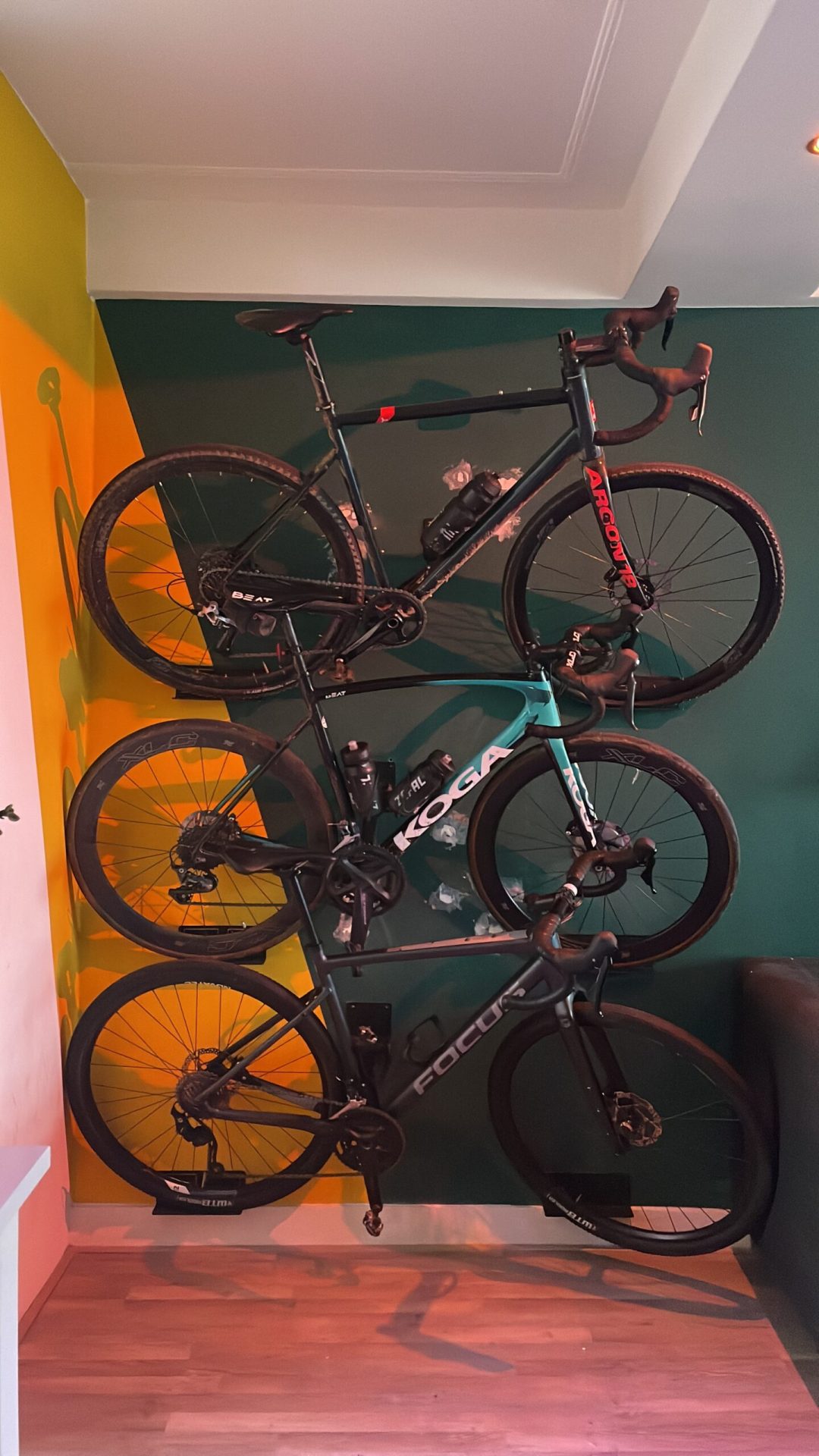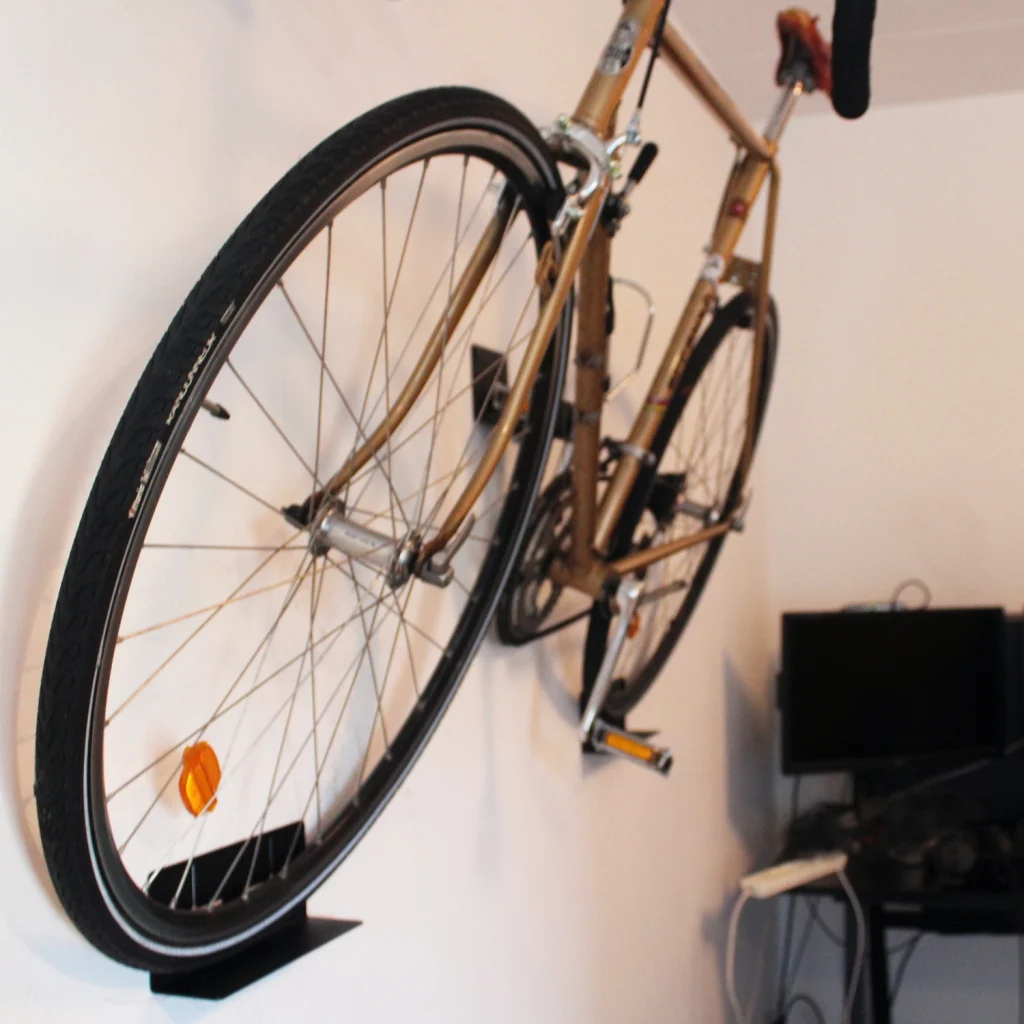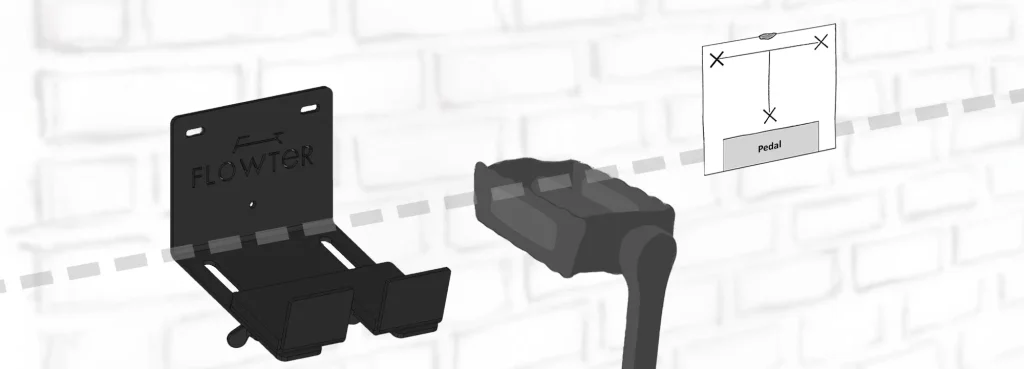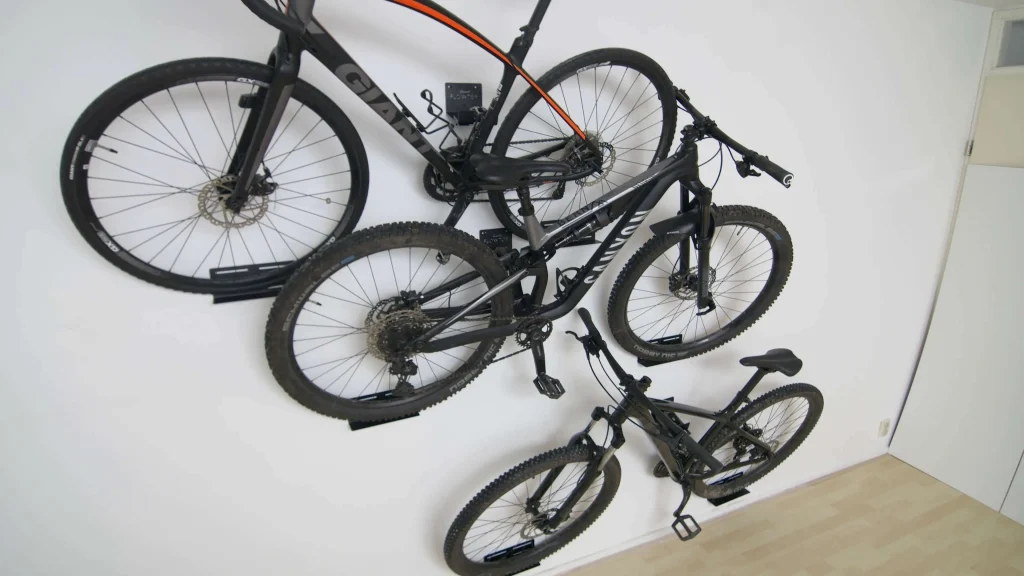Black Friday! 20% korting met code 'BFFLOWTER'
How do you hang several bikes horizontally on top of each other on the wall?
Mika Westenberg

Type of suspension system
There are several systems where multiple bikes can be hung on the wall. Vertical hanging is usually the most commonly chosen solution, but is this really the best one? After all, this takes up a large chunk of floor space and thus sticks out a lot.
The best way to save space is to hang them horizontally one above the other. This can only be done with a bike wall bracket that clamps the bike by the pedal. This way, the bikes will hang at an angle and stick out as little as possible.

Installation steps
Now that it has been explained which system should be used to hang multiple bikes on top of each other, we can start with the roadmap.
In this article, we will use our own Flowter Pedal Hanger. Other suspension systems that use the pedal can also be used. Only those do not have a sliding pedal support part, which allows you to move the bike closer and further away from the wall. This comes in handy when hanging several bikes above each other, as you then want the bikes to stick out more so that the handlebars don’t get into the spokes of the bike above them. So you can hang bikes above each other with more ease and less space to lose.
1: Orienting
First, there are a few important conditions that need to be met.
- The wall should be approximately 2.1 metres high
Anything above is obviously better and below will be more fitting and measuring, but is not impossible. let’s say the minimum is 1.9 metres.
-
A suitable wall
Most walls are suitable for installing hanging systems. Just check whether the type of wall meets the type of plug. Our Flowter Pedal Hanger comes with multi-use plugs that are suitable for any wall. So those of you reading along with a Flowter need not worry - Enough wall space
As a starting point, the wall piece should be as wide as the widest bike to be hung.

2: Top bike first
Preferably start with the top bike and then work your way down. This is because it is very difficult and awkward to work from the bottom to the top. It will be necessary to reach over the bikes when measuring.
- The top bike should almost touch the ceiling with its saddle
Especially with walls that sit towards the minimum of wall height (2.1 metres). So when orienting, look first where the bike touches the ceiling with its saddle - Hang the drilling template of the Pedal Hanger at this spot
So at the spot where the saddle almost touches the ceiling and where the pedal touches the wall, hang the supplied drilling jig.

3. Check that the drilling jig is hanging correctly by positioning the bike with the pedal with the piece of the drilling jig saying ‘place for pedal’.

Read the instructions further in the manual to install the upper one.
4. Now push the bicycle maximum against the wall
As can be seen above, with the Pedal Hanger the bicycle can be brought closer to the wall. In this case, you want the bike to stick out less so as not to let the handlebars get into the spokes with the bike below. So slide the system all the way in.
2: The middle bike
The middle bike should be suspended based on the top bike.
As a starting point, the Pedal Hanger underneath should usually be around 50 centimetres below the other. Here again, the optimal position and angle should be considered so that there is as little overlap between the bikes as possible. This angle can thus be changed by shifting the pedal carrier section.
So try to get the bike as tight as possible under the others so that the middle Pedal Hanger hangs as high as possible on the wall.
3: The bottom bike
The bottom one will have to work with what is left then. Approach works the same as before.

Made a mistake?
- try swapping bikes
- Slide the wheel carrier up or down to move the bike vertically
- If nothing else, it will have to be re-drilled
Conclusion
This was the explanation for hanging several bikes on top of each other. Not difficult, just some work.
Of course, we are always curious to see your photos of multiple bikes on top of each other. So don’t hesitate to send this!
